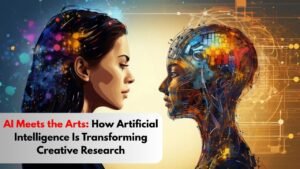Interdisciplinary research is developing in reputation and is an increasing number of seen as vital. Multiple views on research demanding situations will often lead to higher effects. For instance, within the BBC’s 2021 Reith Lectures on AI, it changed into proposed that “every AI centre that’s operating must have a resident logician or ethicist on board to prick the consciences or at the least remind humans that that is essential”.
A commonplace obvious challenge of interdisciplinary research, though, is that one isn’t always just stepping outside obstacles in phrases of creating new information but that one is developing (or as a minimum amalgamating) studies methodologies. This stepping out of our “comfort method zone” creates stresses and might reason dangers for body of workers careers and department recognition.
Additionally, differing values and language create barriers to a success collaboration and institution cohesion typically. Given the above, how are we able to effectively set up and run interdisciplinary research teams?
A research subculture of openness and fluidity
Culture is essential. It is essential that the triumphing way of life is open and egalitarian, empowering researchers to go research regions, methodologies or communities with out worry of failure. Ways wherein one can create that is to get rid of as tons needless structure and formal process as feasible.
Task-orientated groups are the primary shape that have to be followed – bringing together people who can make a contribution to a studies artefact no matter if they’re teachers, PhD college students, lab technicians, software developers or professional carrier staff.
Leadership need to undertake an anti-structure, anti-committee method allowing connections and groupings to be generated backside up by means of researchers who discover not unusual interest. This approach minimizing the extent to which organizational roles are considered and to lessen or get rid of hierarchical line management systems.
Staff Numbers
The attributes of agility and minimum structure and strategies constrain the scale of the research unit. From our experience, we estimate that eighty employees total – all staff and PhD college students – is set the limit. Beyond that, there is a loss of personal connectivity wherein way of life and trust are tougher to maintain.
Setting Research Targets
The main objective for studies group of workers is to “make an impact” either on academia or society in widespread. One desires, although, to be careful about how goals are measured. We use what we term the “Sistine Chapel” KPI: periodically, full-size impact ought to be generated. Micro-measurements can damage a tradition as group of workers begin to view their dating with the research unit as transactional and one that should be gamed.

A Shared Challenge
A unifying totem is the last element of subculture that we accept as true with is critical to fulfillment. All body of workers want to agree at some level on a not unusual epistemological point of view. For example, we take the Open University’s middle challenge round fairness and openness and upload technological innovation. All our research is accordingly extensively aimed toward offering societal excellent thru era, and we assume and encourage our team of workers to be ultra-early era adopters.
Hiring and retaining research expertise
Successful researchers tend to be highly influenced and noticeably professional. Within a multidisciplinary context, it’s miles important that each one body of workers additionally have an open mindset and are for that reason capable of interact with new research frameworks and discipline price structures and semantics. Seeking applicants who strongly align with the general unit values and totems is crucial.
Over the years we have evolved a hiring method that places an emphasis on the high-quality places to put it up for sale, which networks to apply and the way to first-rate highlight what we offer. Talent retention is a subject this is constantly explored and discussed through senior staff in my lab. Interdisciplinary researchers will often be quite widespread and, in a few sectors, may be able to command a long way better salaries in industry.
In addition to the cultural elements outlined above, our approach for maintaining staff is based totally on:
Taking Career Improvement Critically
Often left out in busy studies environments, by means of senior and junior workforce, it’s far important that every one staff have clear profession paths and that those are supported. Support will encompass:
- Extensive mentoring on regions that need development, for instance, funding acquisition
- Understanding obstacles at the extent of the man or woman (eg, lacking a talent), unit (eg, biased decisions) and agency (eg, difficult HR guidelines)
- Ensuring that each one academic body of workers have an “instructional domestic” that they can grow into as their stature will increase.
Understanding and Proactively Preventing for all staff wishes
A key responsibility for all line managers and specially the top of the research group is to concentrate to body of workers and have interaction with all other areas to create the best feasible paintings surroundings. Typical regions that we’ve discussed lately have included: visas, working thru a virulent disease with sick dependants who stay outside the UK and helping workforce who want to interact with the broader network.
We are fortunate that the Open University is a critical listener. Any severe situation we boost is both resolved quick or results in engagement with the institution’s executive. This has enabled us to create an interdisciplinary research environment that is notably regarded externally and wherein team of workers in all roles have overwhelmingly stated fantastic feelings approximately the work surroundings. I can in my opinion say that this mixture is richly profitable.
Conclusion
Building effective interdisciplinary research teams is both an art and a science. It requires intentional selection of members, transparent communication, mutual respect, and a shared vision. When these elements align, the potential for groundbreaking research is immense. The future of innovation lies at the intersections of disciplines—and mastering the art of collaboration is the key to unlocking it.

